Recently, TORQ boss Matt Hart signed himself up for a particularly difficult ‘Everesting’ challenge, which involved cycling repeatedly up and down a local hill until he had climbed the height of Mt Everest and here Matt talks about the nutritional and psychological strategies he used.
This was a particularly interesting challenge for me for a few reasons. Firstly, I have a fair bit of coaching experience and have spoken to athletes on numerous occasions about how best to prepare physically, nutritionally and psychologically for an event like this. Secondly, I swore never to do a 24-hour event myself, because it was of no interest for me (a 12-hour event I did a decade ago was hard enough), yet the severity of the climb I chose and weather conditions were such that I pretty much completed a 24-hour event anyway. Also, I can’t say that I was perfectly physically prepared, which of course I would always advise my athletes to be, giving myself just 4 weeks’ notice to condition myself for this challenge!

To succeed on a journey like this, a sports psychologist would say that you’ve got to have a goal, a motivation and a reason for doing something as daft as this unless you’re the kind of character who just likes doing daft things? For me personally, I would never have signed myself up for an epic challenge like this on the level of fitness I had for the pure hell of it, there had to be a driving force behind me that applied the kind of pressure that would have made the notion of failing an incredibly unpopular option. In my case, I had a very good reason to get the job done and enough eyes on me that failure quite simply couldn’t be an option. I wanted to do something a little bit crazy to capture the hearts and minds of local people to remind them to object to a pending planning application for an incinerator development and to raise overall awareness about how destructive and environmentally unfriendly incineration is. We wrote about this here and produced the short video below to advertise the challenge as well as dropping leaflets (above) through letterboxes. We also announced the challenge to the TORQ audience, so the necessary pressure was applied – I’d look like a proper womble if I didn’t achieve what I set out to do now!

I also had another bit of motivation. Bizarre as it sounds, I’d already agreed to support a Guinness World Record setting team where I would ride as part of a relay from Land’s End to John o’ Groats at the end of June. I saw my Everesting challenge in mid-May as the perfect training for it. I’d need to get fit for the World Record attempt, so why not use the Everesting challenge as a springboard? As I write this, I have just 1 week to go before the World Record attempt and so far so good! It’s another story, but the adaptation I have undergone from riding an upright mountain bike to fine-tuning my anaerobic threshold Time Trial efforts on a very different bike in a very aerodynamic position over 6 weeks has been an interesting journey in itself – one I’ll be sure to write about soon and hopefully if I’m sensible and live a normal life for a bit you won’t hear from me again for a while!
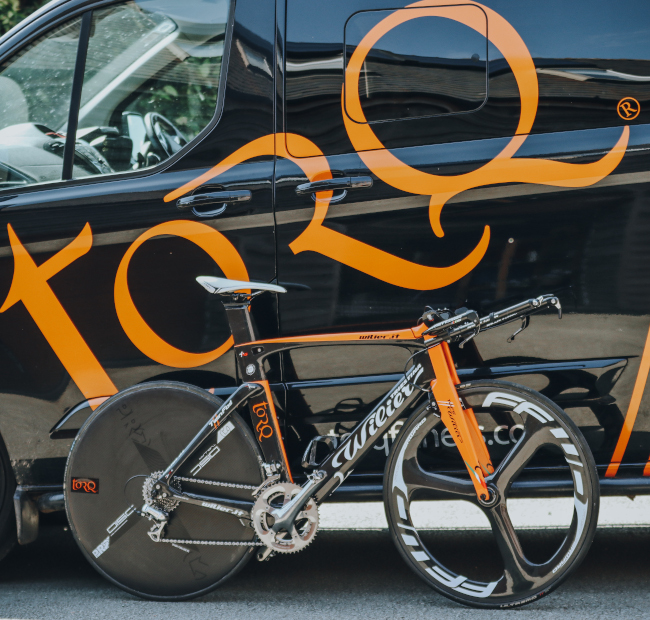
Now, about my fitness? To be fair, I’m never unfit, but my racing days are long behind me, I don’t feel I have anything to prove, but naturally with the knowledge I have I’m quite smart with my training. I love riding my Mountain Bike full stop, but I love it more if I’m fit, so I do squeeze in a couple of interval sessions per week in the winter using Zwift to keep myself sharp and in the summer I do similar, but outside. They hurt quite a bit, but it’s only about 30 minutes of pain, which transfers quite nicely to my on-the-bike fitness. I have a busy life, so I don’t get much time for long rides at the weekend, so I’m happy just to grab a couple of hours on either Saturday or Sunday and then I go out on a Wednesday night for a couple of hours of off-road fun with my local Mountain Biking club. As generally fit as this makes me, it’s hardly the conditioning required to ride up and down a very steep hill for the best part of 24 hours, especially when half of that hill is off road, rocky and incredibly steep. As it turned out, this hill was covered in rain, hail and mud by the time I got to ride it too.
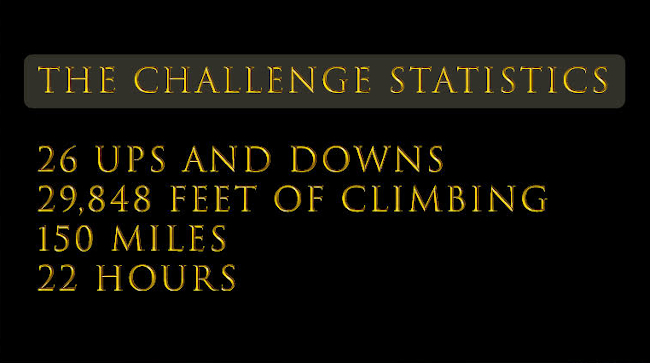
I had 4 weeks to prepare physically. Bearing in mind that the last week would be a taper (resting up so that I’d be fresh for challenge day), that meant that I had just 3 weeks to condition my body. I had top end anaerobic fitness from my intervals, which I didn’t think I’d need for this challenge, although it did help me out of a few tight spots in the end. I would certainly need a strong anaerobic system for the World Record attempt, but I knew that I had to focus on what we call Zone 2 riding, which are long steady efforts to develop aerobic endurance and the anaerobic system could wait patiently in the background until after the challenge. Fortunately, every year I do some kind of training camp or challenge which reignites my aerobic engine, so I knew that 3 weeks would be enough time to get it pumping again. It wouldn’t be pumping optimally, but then this was a race against myself, not anyone else and my aerobic engine would certainly be beautifully primed by the time I’d finished. Again, the World Record attempt firmly in my mind – this would be part of a training process.
So, psychologically I was in a good focussed place and as I’d spoken many times before to athletes I’d coached to do similar challenges, I needed to plan what I could, yet have a healthy respect for adversity. I had to plan for rain, hail and anything else nature could throw at me, because if I went into this with expectations that were too high, it could demoralise me and give me a good reason to give up. I had to face up to the fact that this was going to be a monster struggle through rain, hail, gloopy mud and slippery wet rocks. Acceptance of these miserable facts was vital to keeping my expectations on track.
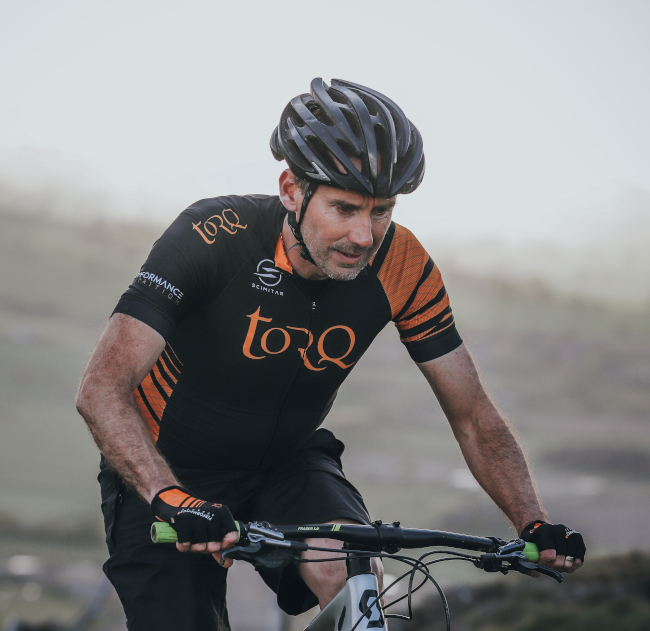
In terms of the controllable factors, I had these nailed too. My bike was serviced, I had a spare bike, I had tools (well, even better than that, I had a friend Paul Page as my mechanic who was on call should I have an issue – I did have an issue of course, so he got the call), I had all my nutrition planned and I had spare clothes. Planning the controllable as much as possible and being prepared for the uncontrollable are vital prerequisites for a successful performance.
In terms of nutrition, the best thing I can do is refer you to our definitive guide to 24-Hour Race Nutrition, because I followed this to the letter:
24-Hour Race Nutrition Resource
I could repeat everything that’s written in this resource again here, but it would make this a very long article. If you’re thinking of doing your own Everesting challenge, please take the time to read and absorb the contents of the link above, because we at TORQ have been advising athletes on fuelling these kinds of events for many years and now I’ve done one following the protocol. It works folks!
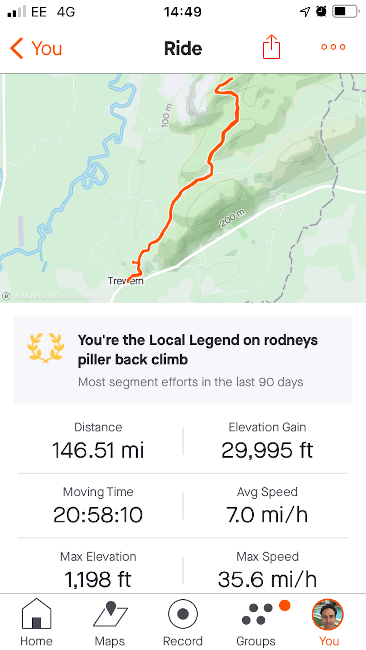
There are a few highlights I’d like to note, which you may find interesting after reading the resource. I fuelled my performance mainly on TORQ Gels and TORQ Energy Drink. Although my ride time (moving time) was around 21 hours on Strava, I was out there for more than 24 hours and it’s interesting to note that in all that time the only ‘real food’ I consumed was 1 ½ tuna sandwiches, the vast majority of my calories came from TORQ products. A shameless advertising plug I hear you say? You’ll have to make your own minds up on that, but one key observation to note about a proper fuelling strategy is that the athlete doesn’t really get hungry. Only on a couple of occasions did I feel like eating normal food and after I finished and had consumed a recovery drink, I didn’t crave normal food then either. In fact, there was no raging hunger over the next few days as you might have expected and I really didn’t feel very tired. I knew that there would be a deeper fatigue that would hit me after a week or so and I mitigated that as best I could by not riding my bike at all for a week. I felt very sleepy a week later and that lasted for a week or so, but fortunately I was on holiday and combined sleeping with a few high intensity short sharp efforts to pull my anaerobic system back into shape in preparation for our World Record attempt.

The other noteworthy point was that I added a scoop of TORQ Ribose to every bottle of energy drink I consumed. As I rode my first climb (it was local to me) I said to myself ‘I hate this climb. Why am I doing this?’ and I’d even fitted a 28 tooth chainring to replace my 32, because I knew how steep the last part would be. I didn’t think I’d actually need it, but the heavy rain on the preceding days and the rain and hail whilst I was riding meant that I went into that gear quite early in the challenge. The hill was so steep and slippery that the only problem I had by the end was painful knees from pushing so hard up it at such a low cadence. The fuelling strategy, including the ribose, meant that never once did I doubt I had the power to get up it and never once did I cramp – not during and not after. I rode every single climb.
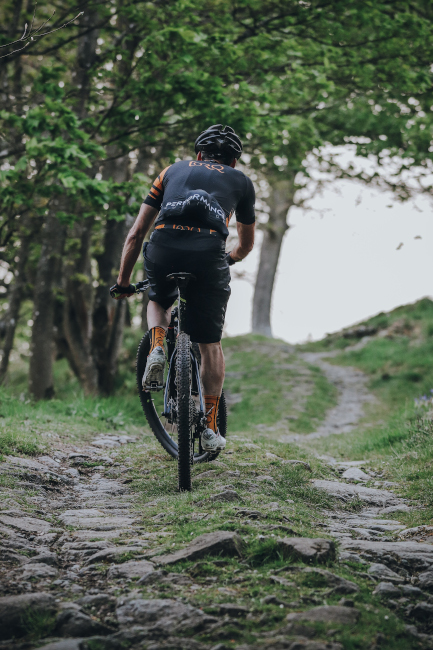
Other than the gels (about 30 of them), energy drink (about 12 X 500ml of them) and 1.5 tuna sandwiches, I consumed 4 TORQ Bars and 2 TORQ Explore Flapjacks (with a black coffee). I also had 2 TORQ Recovery Drinks during the ride, which along with the tuna sandwiches delivered protein every 4-5 hours as well as more carbohydrate. I just drank water for the climb after taking the recovery drink so I didn’t over-carb, allowing the nutrients to be absorbed. I had absolutely no stomach issues during the event and if it wasn’t for the psychology of ‘I’m really fed up with this climb now’ I could have easily kept on going. My fuelling strategy sat really nicely within the 2-3 TORQ Units per hour we recommend via the TORQ Fuelling System.

The only other nutritional intervention I had in the run up to and during the event was a twice daily dose of TORQ HMB to keep my muscles in check and encourage adaptation. This amazing nutrient helps to stop muscle breakdown and encourages repair. I have used HMB on training camps and during other high load spells of training and couldn’t rate this supplement more highly.
As an aside, if you’re ever thinking of doing an Everesting challenge yourself, first of all you need to assess the altitude of the climb you’re going to do it on, which I did:
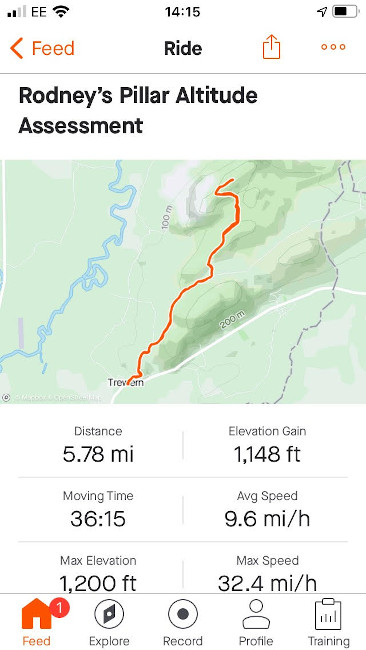
Then you need to work out how many times you need to go up and down to reach the height of Everest. Apparently it’s growing every year due to snowfall, but currently it’s a little over 29,000ft, so best to round it up like I did to make sure. Plus in 100 years when Mt Everest has grown more, you’ll still have Everested and no one can take it away from you! Anyway, it worked out as 26 ascents and descents for me. I added a board (like a racing number board) to my bike with my anti-incineration message on it and along the top of the board I printed the numbers 1 to 26 and laminated the whole board. In my back pocket I carried a permanent marker pen and every time I reached the top, I stopped and put a line through the number representing the climb I was on. It was a good tactic, because the last thing you want to do is lose count, that would be an unmitigated disaster! You’ll note from the picture below that I tried to draw a smiley when I had completed my 26th climb, but fatigue gifted me with the artistic prowess of a five year old child holding a pen in his or her left foot.
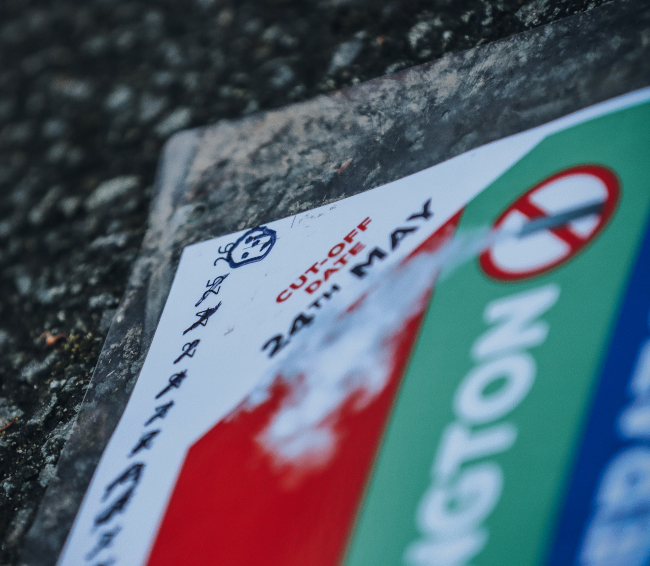
The effort was worth it, because I made it onto the ITV news on the Sunday evening and the Welsh government received the most planning objections they had ever received by a country mile, which certainly wouldn’t have been entirely down to me, but hopefully it helped. We don’t yet know the outcome of the planning decision, but we’re keeping our fingers crossed that common sense and moral judgement prevails.

I have a few thank you’s to make. Firstly, thank you to Exposure Lights for supporting me with the best possible lighting rig for this event and thank you in advance for the support you’re giving us for our World Record attempt this coming weekend too.
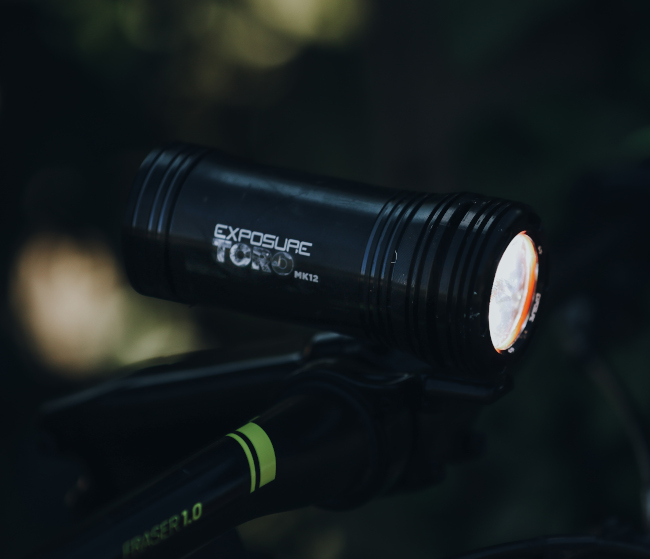
Also, a big thank you to our other team sponsors Schwalbe Tyres, Scimitar Clothing, Fenwick’s Bike Cleaning & Lubes, Scott Bikes and Lezyne tools.
Also, a huge thank you to the two Pauls. Paul Wilkes for being there all day for me and deep into the night in case I came off my bike at some unearthly hour and Paul Page as previously mentioned who helped with quite a few on-course repairs and hung around for most of the day. Thank you too to my wife and daughter for putting up with me and for my daughter’s wonderful photography and video production – lucky to have a daughter that runs such a fabulous photography business. Also, finally, a huge thank you to all of those who came out to support me on the route and to fellow members of BiIG who have done such an incredible job at campaigning against incineration.
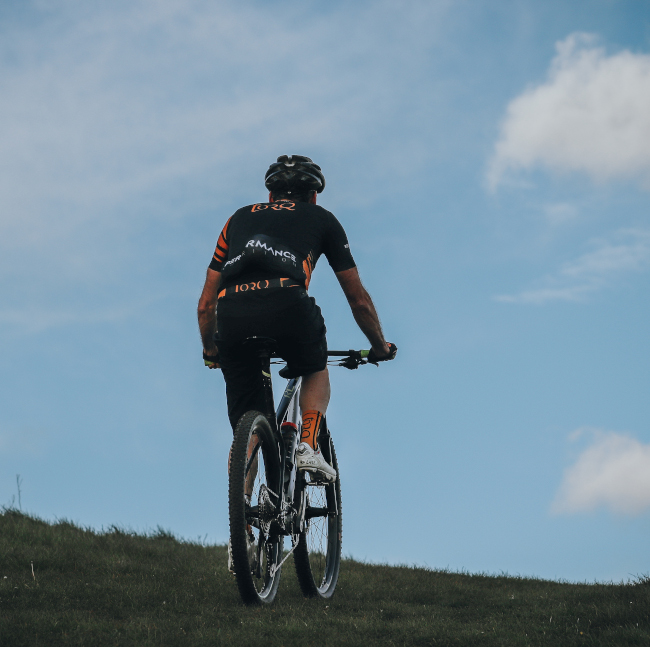
If you have any questions about this article or anything else on this website, please don’t hesitate in contacting us at enquiries@torqfitness.co.uk or phone 0344 332 0852.







